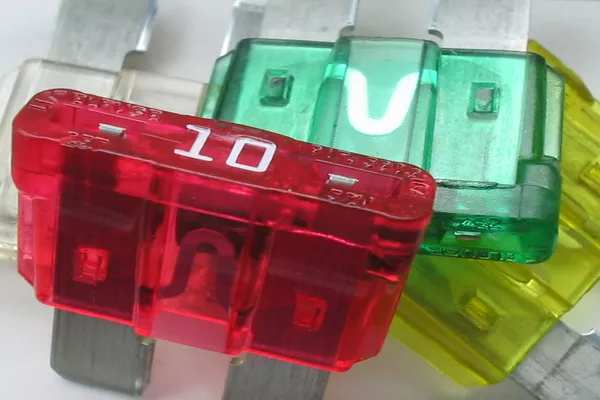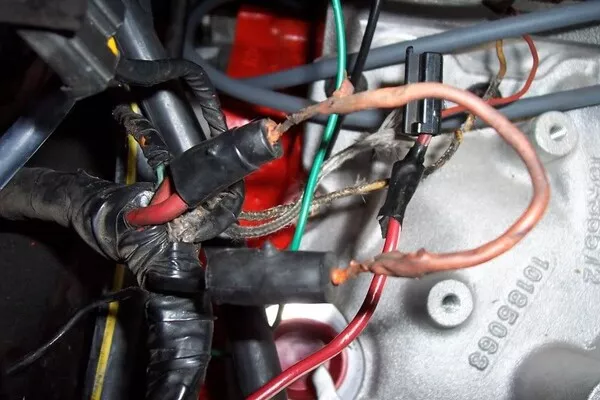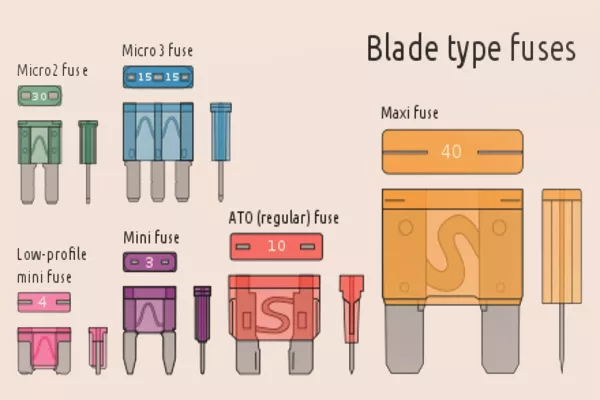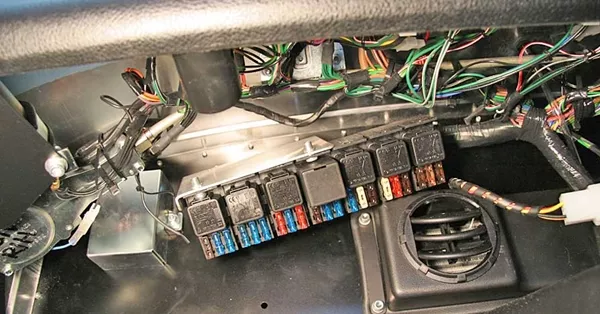Two of these parts that deserve more than subtle attention are the fusible links and the fuses. We pretty much already have an idea of what fuses are. But what about your car’s fusible links? What makes them so different from fuses? Are all fuses the same? Why do the fuses in my car appear in so many colors?
You’ll get all the answers to those questions in this article from Philkotse.com.

Most vehicle owners skip understanding the other trivial parts of their car
1. The fuses in your car
Your automotive fuses are like the gatekeeper and firewall of your car electronics. You will appreciate fuses if there is a sudden surge of electricity or short that may damage any of your fragile electronics.
If there ever happens, your fuse will throw itself in the line of fire. In simpler terms, the fuse acts like a dispensable bodyguard that’s ready to take the bullet for your electric component.

Your automotive fuses are like the gatekeeper and firewall of your car electronics
Fuses are meant to protect more valuable (and expensive) devices like your amplifier or your radio head. If your fuse is blown out in any device, that specific device may not work temporarily. But the good news for you is that car fuses are easily replaceable.
You can also find them almost anywhere. They can be bought at automotive-repair shops, online stores or dedicated physical stores. Fuses are typically affordable compared to the components that you would’ve ended up replacing if you didn’t have them.
Fusible links, on the other hand, are somehow similar to regular fuses. The likeness is present in both its functionality and purpose. There are tons of different types of fuses out there.
But most of the modern trucks and regular-sized vehicles use one of the listed blade fuses. There are also occasions where it uses more than two or so. We arranged this list in descending order according to the size.
>>> Check out: Car maintenance: Things you should know when the fuse keep blowing

Fusible links are somehow similar to regular fuses
Maxi heavy-duty fuses (APX)
- These are about the largest type of blade fuses out there.
- These can be used even in heavy-duty and industrial applications.
- It is also available with much higher amperage ratings compared to other blade fuses.
Regular fuses (ATC, ATS, ATO, APR)
- These are the standard as well as the first types of blade fuses.
- These can also have different alternate versions that can fit in about the same slots.
- These fuses are usually present in the newest tracks and vehicles.

Regular fuses are the standard as well as the first types of blade fuses
Mini
- These fuses are smaller compared to regular blade fuses.
- This, however, is available ina similar amperage range to that of regular blade fuses.
- You can also get it in a low-profile mini variety.
Micro
- These are the smallest types of blade fuses.
- These are available across the least range of amperage ratings.
- This comes in two varieties. The first one is the two-prong micro2. The second is a three-pong micro3.
>>> Read more: Tips for buying replacement car parts.
2. Are all car fuses the same thing?
The modern car fuses today are based on the ATC and ATO fuses that were patented by Littelfuse in the 1970s. As of today, there are multiple configurations and sizes of fuses. But they still bear a significant resemblance to the ATO fuses of the past.
In fact, a lot of applications today still require standard ATC and ATO fuses. The differences between the many varieties of blade fuses are the number of terminals and size. But fuses that are larger in size are used on applications that require higher current.

As of today, there are multiple configurations and sizes of fuses
>>> Recommended articles:
- 5 must-know tips if you want to avoid buying fake car parts.
- Top 3 Tips on Getting the Best Deals on Car Accessories in Banawe Street.
Less modern vehicles use different varieties of fuses. The common choices for these, however, were Bosch type and glass tube fuses. You can still see these today in older cars that roam the roads.
The glass tube fuses are made of a glass tube with metal terminals as the cap. It also has a metal strip that passes through its center. Bosch type fuses are roughly cylindrical in shape. But these are made of solid ceramic material that has a metal strip on its surface.
Automotive fuses can be differentiated by two elements. These are the current rating and design types. With that said, you can assume that not all fuses were created the same. Let’s say that it is possible for you to replace an ATO fuse with other regular ATO fuses.

Automotive fuses can be differentiated by two elements
But doing this can be dangerous especially if the substituted fuse has the wrong amperage. You can also replace your Bosh-type fuse using an American-style glass. But remember that getting one with the same amperage rating is vital. Replacing it with glass tube fuse with a flat cap will not fit snugly into one intended for one with a conical end cap.
3. Blade fuses: Its different types
If you pop open your fuse box, you will see five different variants of blade fuses. These are the micro3, micro2, regular, mini and maxi. The blade houses may be transparent or opaque depending on the automaker.
If the housing is transparent, you can see through it if the fuses are bad. You will be able to see the winding metal strip that connects the two terminals. If you noticed that the strip is damaged, your fuse may have blown.
Recent posts
- Your car's electrical system and what you need to know when it shuts down Aug 16, 2022
- A summarized guide to all of your car parts & functions Aug 18, 2023
- 9 aftermarket accessories & parts priced below PHP 50,000 Oct 20, 2020
- How to prevent teens from drunk driving after prom nights and parties Aug 16, 2022
- 5 must-know tips if you want to avoid buying fake car parts Aug 09, 2022












